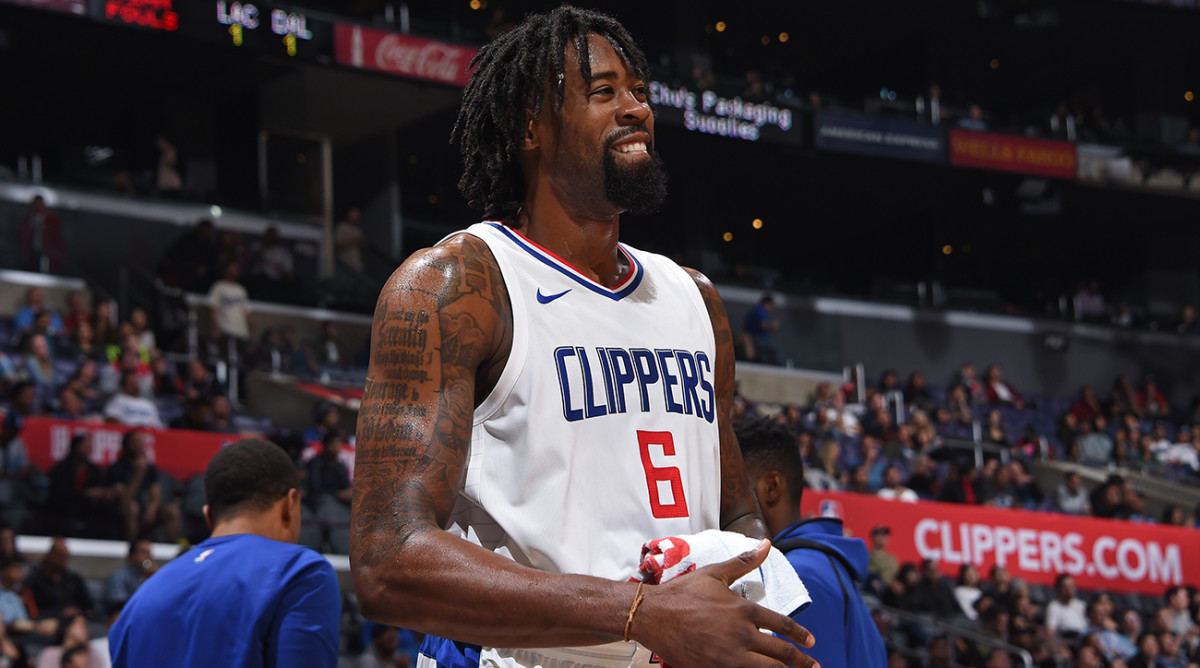NBA Free Agency: The Thought Behind the One-Year Deal Trend

Free agency, the NBA's designated window for indulgent spending, has been defined this year by an uncommon restraint. Many teams have insisted on short-term deals, their focus trained to the star-studded market in 2019. Many players found those offers agreeable—some for the inflated salary involved (as with Trevor Ariza's one-year, $15 million pact with the Suns), others for the opportunity to gauge their fit with a new team (as with DeAndre Jordan and the Mavericks, who will pay him $23 million next season), and all for the freedom that comes with returning to an especially eager market a year from now.
This is the summer of one. Nearly half of the deals struck in free agency thus far have been one-year agreements, not including those where a player will have the option to test the market in 2019 if they so choose. Even veteran players—those most likely to favor the security of a longer-term contract—have been game to wait. There is a mutual interest in delay: the sheer number of stars available next summer means there will be more cap room to go around, which leaves free agents themselves with more viable options.
As judged by total salary commitments, this has been a relatively lean year—in so much as that can be said of a league that just doled out more than a billion dollars in new contracts. But consider the means to that end. This year's free agent class has done relatively well in terms of annual salary, but only 13 players have signed deals guaranteed for $25 million or more in total. Last year, more than twice as many players inked contracts that met or exceeded that value. The stars are still getting paid, but the NBA's middle class is in a holding pattern. There is no three-year, $64 million contract out there for the Danilo Gallinaris of the world, and the four-year, $70 million offer sheet the Knicks gave Tim Hardaway Jr. feels like it was penned in a different era.
The pinch of mid-level players is really a confluence of events. The league's new TV deal created a huge influx in revenue and, therefore, cap space. The NBPA then rejected a proposal to spread that windfall out over several seasons, and the NBA itself didn't implement other means of redistributing its profits to similar effect. Front offices mistook a fluke for a trend and promptly spent like crazy. At issue was more than the punchline contracts of Timofey Mozgov, Bismack Biyombo, or Joakim Noah. It was the tens of millions invested in players like Meyers Leonard, Miles Plumlee, Jerryd Bayless, and Andrew Nicholson.
Then, in 2017, certain teams that could have shifted gears chose to spend instead. Toronto committed to Kyle Lowry, Serge Ibaka, and C.J. Miles. Miami paid handsomely to keep Dion Waiters, Kelly Olynyk, and James Johnson. Others, like Sacramento, simply threw caution to the wind in paying top dollar for George Hill and Zach Randolph.
Market dynamics in the NBA are often little more than 30 very different organizations doing the best they can with the information available. Some are more cautious than others and some are simply better prepared. Some cannot be bothered with rhyme or reason beyond what is immediately possible. Yet it's their collective decisions that then dictate a player's earning potential. It's their 30 distinct choices that then leave Clint Capela and Marcus Smart without offer sheets or leverage.

Not every franchise is operating with 2019 in front of mind, but enough have made it a priority to give this summer its distinct mode. It raises an eyebrow when teams forego use of the mid-level exception, and it deserves note when certain teams—like the Clippers—pointedly use their exceptions on one-year, low-stakes deals. Strange as some of the Lakers' roster choices have been since landing LeBron James, the terms of those contracts—for all four of Kentavious Caldwell-Pope, Rajon Rondo, Lance Stephenson, and JaVale McGee—betray the organization's intentions. The prevailing wisdom was to wait. That was as true in Los Angeles as it was in New York, as sensible in Philadelphia as it was in San Antonio.
When the league takes seriously the potential availability of Kevin Durant, Kawhi Leonard, Kyrie Irving, Jimmy Butler, Klay Thompson, Karl-Anthony Towns, DeMarcus Cousins, Al Horford, Kristaps Porzingis, Kemba Walker, Marc Gasol, Kevin Love, Khris Middleton, and Goran Dragic, this is what happens. And from that crowd of stars comes opportunity. Some of those potential free agents will be restricted, and therefore unlikely to leave their current teams. Others on that list might pick up their player options, should it suit them.
NBA Free Agency Needs to Return to Normal in 2019
For quality pros, free agency used to be an interchange between multi-year deals. Now it's something more malleable—to be controlled with options and delayed with one-year contracts that allow a player to hit the market at the most opportune time. A center—like Jordan—might look around the league today and see precious few starting jobs available. A point guard—like Smart—might find that the teams most likely to sign him don't yet have the space to do so. Either circumstance could easily change by this time next year, making it all the more viable to defer.
The NBA is increasingly a bet-on-yourself league and free agency, as a result, is no longer some force beyond a player's control. There are options beyond signing for big money with a bad team or agreeing to a four-year deal for its own sake. Every contract has its ticking clock. Players have simply taken to winding back the hands on that clock as they see fit.
